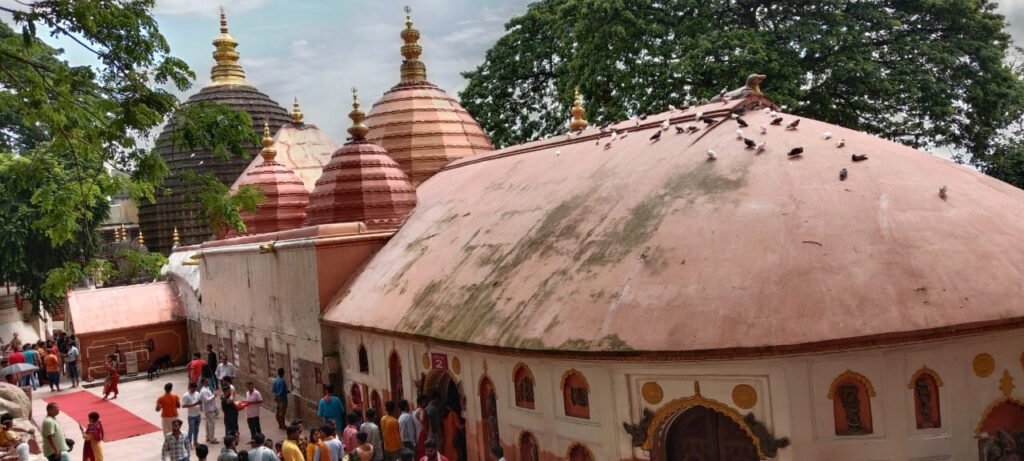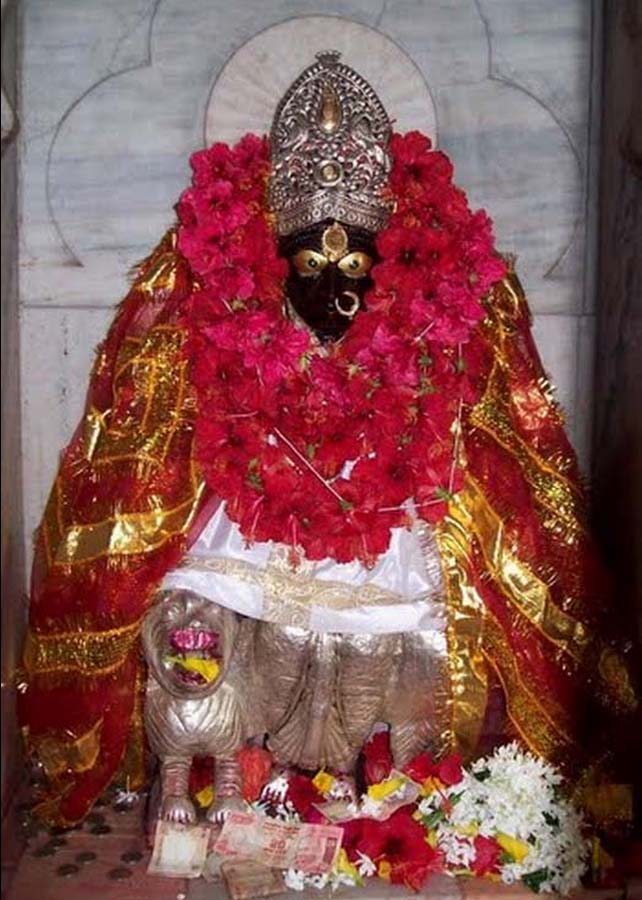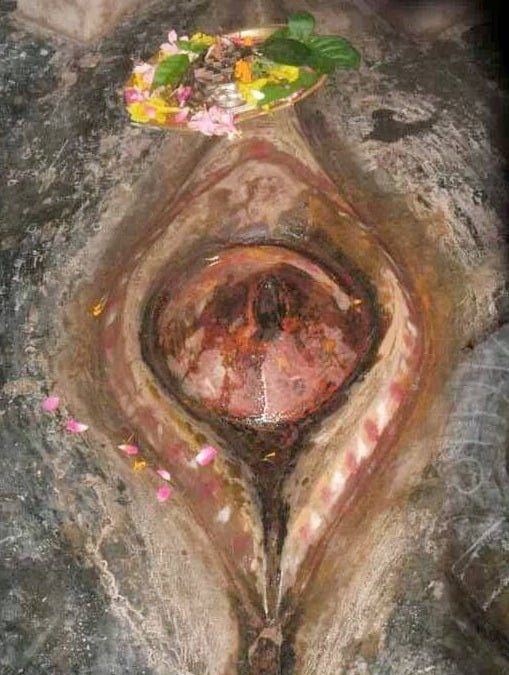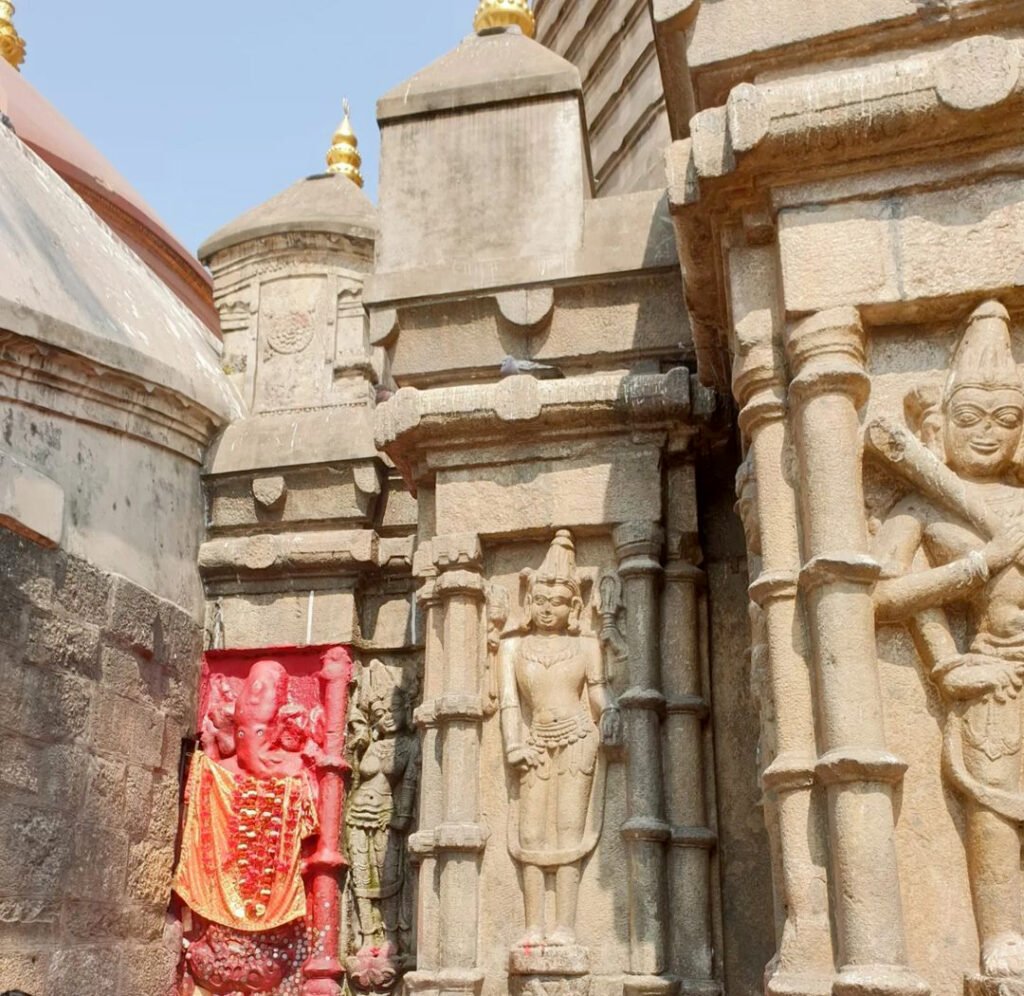Kamakhya Temple: The Tantric Temple of Mystery and Magic
Kamakhya Temple is one of the ancient Hindu temples and one of 51 Shakti Peethas. It is situated on Nilachal Hill, Guwahati, Assam, India. It is one of the most attractive temples for Tantric worshippers. There are many mysteries behind the temple and places for learning black magic. According to archaeologists Kamakya temple belongs to the 8th century and was renovated many times. The temple consists of four chambers. You can find magnificent sculptures of Hindu gods and goddesses on the walls.

Contents
Significance of Kamakhya Temple:
During Daksha yagna when Sati self-immolated herself and Lord Vishnu cut the corpse of Sati, her Genitals fell at this place. It is also called ancient Khasi where sacrifices were done. We find devotees offering goats to goddess Shakti. According to Kalika Purana, goddess Kamakhya boons with all the desires of her devotees and gives salvation. Many devotees worship maa Kamakhya as a Tantric goddess.
Goddess is worshipped with flowers and sometimes animal sacrifices. As part of animal sacrifices, previously there was a tradition of sacrificing pigs by priests. Goddess is worshipped in both Vamachara and Dakshinachara modes. During Ambubachi Mela performed annually, thousands of tantra devotees come here to worship the goddess.
Although it is one of 51 Shakti Peethas, we don’t find any image of Shakti, but below ground level, there is a rock fissure in the shape of Yoni which local devotees consider for reverence. In Garbhagriha, there is a yoni like hollow depression where underground perennial spring water oozes out.
Read More>> Shree Aparna Devi Temple Bhabanipur Shaktipeeth Bangladesh

Legend of Kamakhya Temple:
According to ancient scripts, there lived a demon named Naraka who was the son of Lord Vishnu manifestation and Goddess Bhudevi. Once he approached goddess Kamakhya and proposed his willingness to marry her. She agreed to his proposal on the condition that he needed to build a pond, temple, and stair to Nilachal Hill. Naraka who attained tantric powers used them to build everything as per conditions. Looking at his valor lord Vishnu took the form of Hen and given the sound of cuckoo before the night ended. Naraka felt it was already morning and could not accomplish the task given, felt anger, and started chasing the hen to kill. In this process remaining night ended and got to know that he was fooled. Still, traces of unfinished stairs are called with the name Mekamargalousam and the place where the hen was killed is called Kukurakatakchekki.
When there is a spread of diseases locals sacrifice healthy human beings by tying to the pole. As part of it prisoners, sinners, and people who are punished for hanging are brought to this place. Also, there is a temple for Manasa Devi near Gauhati, if you worship this goddess all kinds of poisons get nullified. We find snake sculptures on the parts of the face and legs of the goddess Manasa Devi, who is the sister of the snake god Vasuki.
Read More>> Shri Jogadya Shaktipeeth, Kshirgram, West Bengal

Kamakhya Temple Mystery:
Perhaps the most mysterious phenomenon that clings to the Kamakhya Temple is that is believed that goddess Kamakhya menstruates once a year. During these four days, the temple stays closed for devotees. However, the priests claim that the flow of red-colored water present in the temple during the four days is the result of menstruation of goddess.
Yet the Kamakhya Temple still holds many mysteries associated with the river Brahmaputra, which changes its color every year for a few days during the festival of the Ambubachi Mela. The festival is organised as a celebration of the goddess’s menstruation. As they cannot explain this mystery, it is also believed by some people that it is a miracle.
Another Tantric site is the Kamakhya Temple, most people associate blacks magic and occult practices when they hear about Tantric rituals, but if the priests of the site are to be believed, then they only use Tantra rituals for good purposes or healing and protection.
Other mysteries of the Kamakhya Temple are as follows:
It is believed to have been constructed at the exact location where Goddess Sati’s yoni fell after her father, Daksha, conducted a yagna during which he insulted her husband, Lord Shiva.
It is also equipped with a natural spring, held to have healing properties.
The temple is also known for its Kamakhya Yantra, which is considered to be a Tantric diagram with powerful mystical powers.
Kamakhya Temple – a centre for pilgrimage where people from every nook and corner of India come, not only belonging to any religion or caste.
Read More>> Subramanya Swamy Temple at Tiruttani

Places to visit near Kamakhya Temple:
Umananda Temple: A Shiva temple set within Peacock Island within Brahmaputra River. Views include both the river as well as the city. Not on land, but by boat to reach.
The Assam State Zoo is undoubtedly among the Guwahati zoos; it consists of a variety of species, one of which is a type of rhino-the Great Indian One-Horned Rhinoceros-and several types of birds.
The Assam State Museum, established in Guwahati, contains vast items and exhibitions that provide descriptions on Assamese history, culture, and artistic expressions.
Nehru Park: A perfect place to relax amid the din and bustle of the city. It’s also famous for boating.
Balaji Temple: Situated in the district of Nagaon. Dedicated to Lord Venkateswara. Lots of devotees visit.
Navagraha Temple: Located at Chitrachal Hill, which provides a city view of Guwahati. The nine-planetary temple provides a view of it. It is a home for all the wildlife freaks. This park comes within the city of Guwahati and makes an excellent viewing place in its natural surroundings for the Indian rhinoceroses. Available are wildlife safaris in this park.
Bhuvaneshwari Temple: Situated near the Kamakhya Temple and, on both historical and religious grounds, is a landmark on its own.
Sualkuchi: This is actually called the “Manchester of Assam” because silk weaving is its leading trade. One can visit a few villages who do their silk weaving and then one can buy their traditional silk products.
Hajo: It is an old town, historically and religiously important one; it contains both Hayagriva Madhava Temple and Poa Mecca Mosque
Dipor Bil: It is a fresh water lake which is 13 km to Guwahati and home to the birds. Boat race also can be enjoyed here.
Read More>> Shree Kiriteswari Shaktipeeth Temple

How to reach Kamakhya Temple:
Air: Lokpriya Gopinath Bordoloi International Airport which is located at just 20-25 km can make you reach this temple fast.
Train: Devotees who cannot afford to come by air can reach Kamakhya temple by train, Guwahati Railway Station is located at just 6-8 km. away.
Road: The Temple is well connected by road with many cities in Assam and neighboring states.
